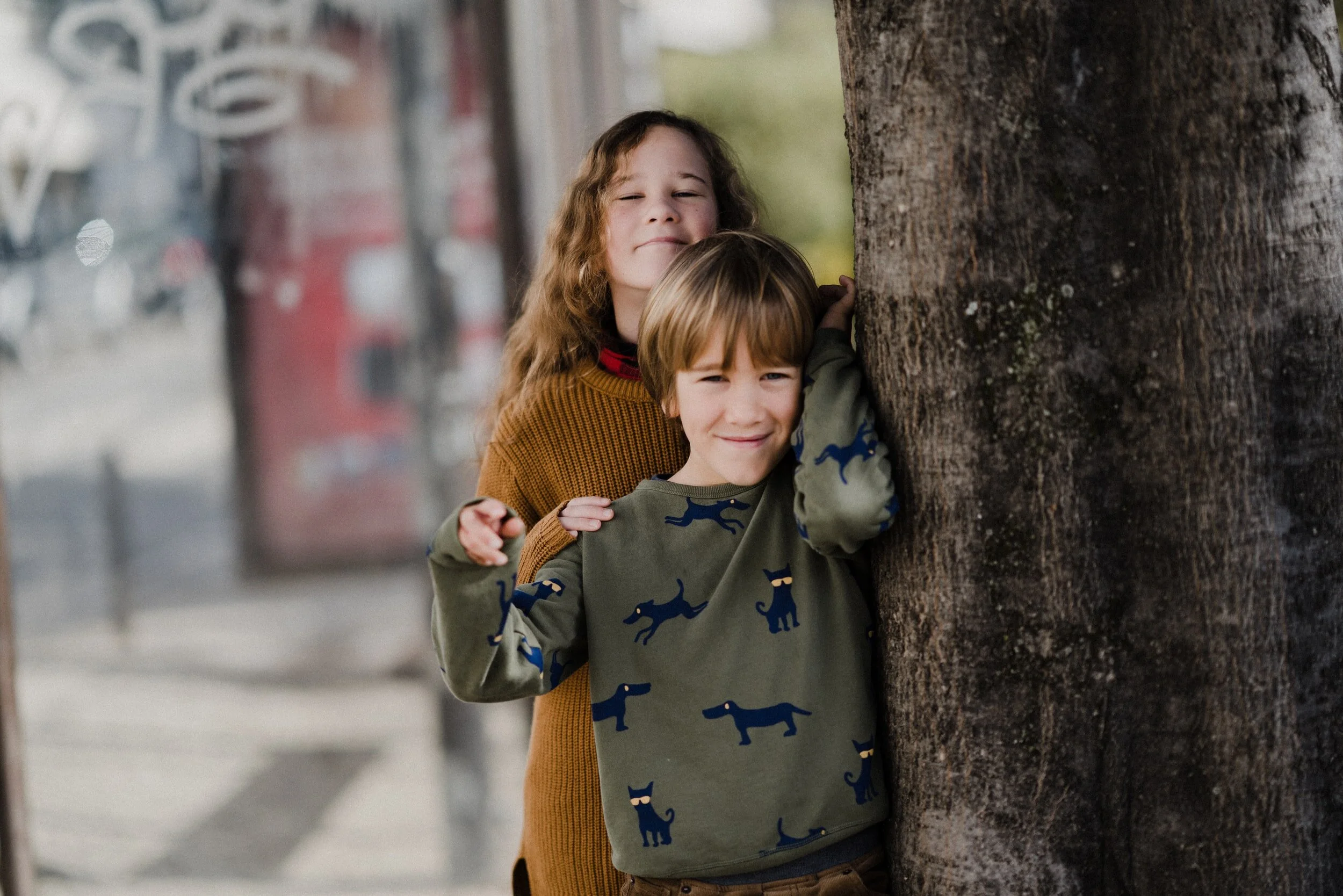Every kid worries from time to time. It’s normal (and even healthy!) to wonder about fitting in before the first day of school, or to imagine the worst-case scenario before taking a big test. Usually, these worries are easy for kids to talk about, because they know other kids have felt the same way. They also tend to be time-limited: once the test or first day of school is over, the worries are over, too.
For some kids, worries aren’t so easy to talk about. A troubling thought or mental image might pop up out of nowhere, when a child isn’t expecting it. Their worries may be repetitive and feel very difficult to control. Often, these thoughts are really scary and upsetting. They can be dark, violent, or about a taboo subject. These kinds of worries are called intrusive thoughts.
Kids don’t want to be thinking these things, and know they would never act on the thoughts they’re having. So why do they keep happening? In this post, we’ll be talking about what exactly intrusive thoughts are, why they happen, and when to seek help.
What Are Intrusive Thoughts?
Take a second and imagine an intruder. What do you think of? Someone who busts down the door, unannounced, without being invited. What a scary scenario! It’s safe to assume that most of us would be pretty freaked out to discover an intruder in our home. We’d probably dread having it happen again, and try everything we could to make sure our house was secure in the future.
Intrusive thoughts are the brain equivalent of an unwanted guest. They show up to ruin the party. Intrusive thoughts tend to:
Pop up out of the blue
Come back repeatedly
Feel unlike the thoughts a child usually has
Be upsetting to the child
Intrusive thoughts are ego dystonic. This is therapy jargon that means a person doesn’t agree with the thoughts, and it may not even feel like the thoughts really belong to them. Intrusive thoughts include imagery that is violent, sexual, or feels “wrong” to a child. Other times, worries about worst-case scenarios might come up again and again. They aren’t things that kids would choose to think about, and they’re often the opposite of what a child would do or hope for.
Kids with intrusive thoughts may feel distressed, anxious, or ashamed. They may not understand why the thoughts are happening, but can guess that not everyone is bothered by their thinking in this way. Because the thoughts feel out of control, children may dread having more and try to avoid them.
At What Age Do Kids Get Intrusive Thoughts?
There is no set age at which intrusive thoughts start. However, they may be more common or noticeable in tweens and teens. Intrusive thoughts are sometimes a symptom of OCD, which can show up as early as age 7 or 8 and as late as the teens or early twenties.
In my child therapy office, it’s usually middle or high school kids who are able to put the weird experience of having unwanted thoughts into words. They are old enough to think about their own thinking and notice their thoughts as they pass by, so they know that something doesn’t feel right.
Although they may not talk about it as much, younger kids can be bothered by these thoughts, too. Because they don’t have the vocabulary to talk about what’s going on, you might see changes in their actions, instead. For example, they may ask for reassurance about the same subject again and again.
Why Do Children Have Intrusive Thoughts?
Now that we have spent the past several paragraphs talking about how difficult and upsetting intrusive thoughts can be, you’re probably wondering why kids get them in the first place. The answer may surprise you! Many people experience intrusive thoughts, and it doesn’t necessarily mean something is wrong. They may happen when a person is going through a lot of stress, or they may just happen randomly.
Having an intrusive thought every once in a while isn’t a sign of mental illness. They can be totally normal, like the brain version of a hiccup. A child with occasional intrusive thoughts can usually brush them off without taking them too seriously.
What Mental Health Problems Cause Intrusive Thoughts?
Children who are struggling with repeated, ongoing intrusive thoughts can’t brush them off so easily. In these cases, a child may be dealing with a mental health problem that needs attention. OCD and PTSD are two common mental health conditions that can cause children to have intrusive thoughts.
Kids with OCD deal with repeated thoughts, worries, or mental pictures that upset or scare them. Kids are bothered by these worries, and feel pushed to do something to make the worry go away or prevent something bad from happening. This creates a cycle of repeated worries and repeated behaviors, called obsessions and compulsions, that take up a lot of time and add even more stress.
Children who have survived extremely frightening or dangerous events may have lingering problems after the fact. While some kids will bounce back, others may be diagnosed with PTSD. Kids with PTSD will re-experience parts of their trauma in some way, often through intrusive thoughts or flashbacks. Flashbacks are vivid memories that pop up suddenly and intensely, almost as if a child is living through the event again.
What Are Some Examples of Intrusive Thoughts in Children?
Most of the intrusive thoughts children have fall into one of three broad categories: worries, flashbacks, and “inappropriate” thoughts. If you think your child may be having intrusive thoughts, keep reading to take a closer look at each category. I’ll share some examples of each intrusive thought type. It can be helpful for both kids and parents to discover that they’re not alone, and many kids (and adults) deal with these kinds of thoughts.
Worries: Children with anxiety or OCD may have repeated, unwanted worries that they cant seem to shake. These are often “what if” worries that focus on something bad that could happen in the future. Other times, these “what if” thoughts could be about something naughty a child worries they could have done. Some children with OCD may also get a nagging sense that if they don’t do something exactly right, they could cause something bad to happen. These thoughts may not always be logical, which can make them even more confusing and bothersome for kids. Here are some examples:
“What if I throw up in public?”
“What if I accidentally lied to the teacher?”
“I have to step on all the sidewalk cracks or I won’t be safe.”
Flashbacks: These are most common in kids with PTSD. Flashbacks may feel like they come out of nowhere, or they can be triggered by something that reminds a child of their trauma in some way. They can include any of the 5 senses, and often activate a child’s fight-or-flight system as if the dangerous event was happening again. Examples of flashbacks include:
Feeling as though you’re back in the place where a trauma happened
Having an image of the trauma pop into mind
Hearing or smelling something you associate with the trauma
“Inappropriate” Thoughts: I put inappropriate thoughts in quotes here because there’s a big difference between thinking something and acting on it. We all have weird thoughts from time to time about things we probably wouldn’t be proud to share. Sometimes, intrusive thoughts are about the exact subjects we try to push away or not think about in our day-to-day lives: things like sex, violence, and criminal behavior. These kinds of thoughts can cause a lot of shame, guilt, and distress for children, who worry these thoughts mean they are bad or naughty. They may have thoughts like:
Imagining hurting someone else
Picturing themselves stealing something
Noticing other people’s bodies or imagining them naked
Are Intrusive Thoughts Normal?
The short answer: yes. Intrusive thoughts can be weird, annoying, or disturbing, but they are totally normal. In fact, most of us will probably have intrusive thoughts at some point in our lives. One recent study found that 94% of people have them, which is a surprisingly huge number.
That number is particularly surprising when you consider that most kids with intrusive thoughts feel like the odd one out. They may worry they’re the only ones who have ever had thoughts like this, and that it means they’re bad or weird. Most adults with intrusive thoughts don’t talk about them with other people, either because they quickly disregard them or because it would feel odd to mention in casual conversation. No wonder kids feel so alone.
So, intrusive thoughts are normal—but we know that they can still cause problems for kids. Those issues aren’t caused by the thoughts themselves. Problems arise when the thoughts are very frequent or intense, or when kids have a hard time dismissing them.
Children with OCD have a tougher time disregarding stray thoughts that the rest of us would shrug off. They may take these thoughts more seriously or begin to fixate on them, which causes the thought to pop up more often. Trauma-related thoughts and flashbacks may be so upsetting that they quickly overwhelm a child.
Help for Kids with Intrusive Thoughts in Charlotte, NC
If your child is complaining of an occasional intrusive thought, a little reassurance and education may be all she needs to feel better. It’s helpful for kids to hear that their thoughts are normal, and can’t hurt them or others. Armed with that knowledge, it may be easier for kids to let intrusive thoughts pass by without taking them too seriously. This reduces anxiety which, over time, can also reduce how often the thoughts happen.
On the other hand, you may be on this page because your child’s thoughts are causing larger problems. Maybe you recognized your child in the descriptions of OCD or trauma. If these thoughts have been happening for a long time, are disrupting your daily life, or are combined with other symptoms, therapy can help.
Cognitive behavioral therapy helps anxious kids learn how to catch themselves when their thoughts aren’t doing them any favors. Being able to put a name to your worries helps you to gently shift your mindset. In CBT kids learn that they have control over their thinking, and what thoughts they choose to listen to. A specialized form of CBT called Exposure and Response Prevention helps kids with OCD break the cycle of obsessive thinking and repetitive behavior.
Play therapy helps younger children work through their complicated feelings after trauma. Kids naturally make sense of the world around them through play, and this gentle, child-led approach lets kids handle scary topics in the way that feels safest to them. For kids who are ready to tell their story more directly, TF-CBT gives children a step-by-step path toward managing strong feelings, talking about their experiences, and coping with reminders of trauma.
If you are looking for therapy in North Carolina, New York, or Florida, I’d love to help. We can meet online or in-person in my counseling and play therapy offices just North of Charlotte, North Carolina. If you’ve got questions or would like to schedule an appointment, contact me here.



